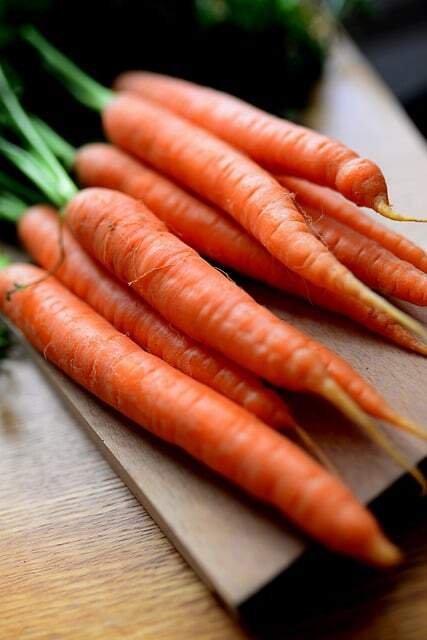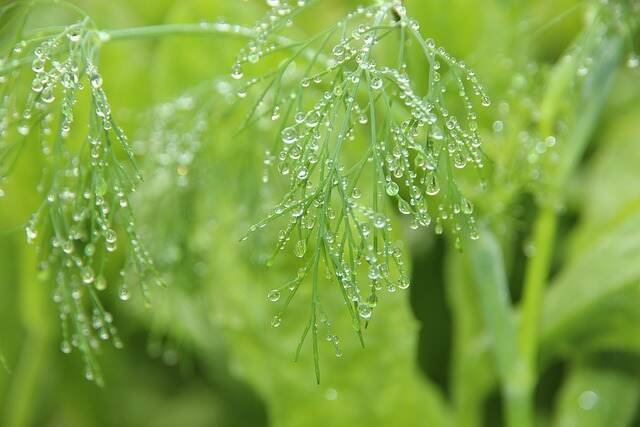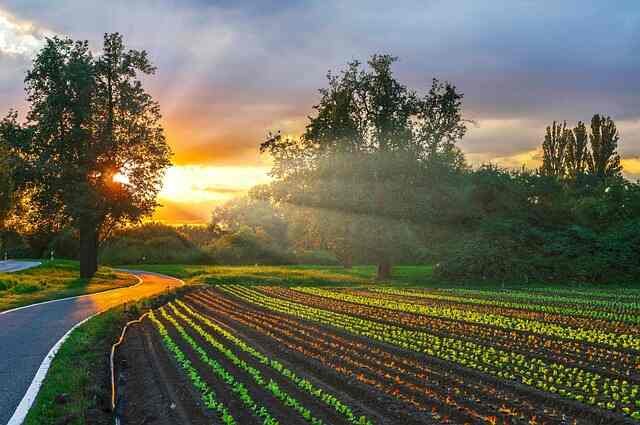What’s growing in gardeners’ minds this May? Things are starting to heat up, some of our plants are starting to flower and go to seed. Because the warm weather is here, a lot of gardeners will remove these plants. But in today’s article, I’m going to share with you five different veggies that I never remove, and I always let them flower and go to seed in my garden. Because when you do, something amazing happens!
Now, when I say “flower and go to seed,” I’m referring to the process of bolting. When annual vegetables are past their prime and the harvest is pretty much done, and they’re at the end of their life cycle, they will send out these flowers, which will then turn into seed pods and reseed the ground for the next generation of the plant and perpetuate the species.
In this article, we’re not talking about species of plants where we actually harvest the seeds for our food, like peas, beans, or grains. Obviously, we want all of those plants to go to seed because that is what we actually harvest and eat. For most vegetables, when they begin to bolt, flower, and go to seed, they are well past the point that any human would want to eat them.
So in most cases, the only time you want your plants to bolt on you is if you want to save and collect the seed or you want them to reseed the ground so they automatically reseed themselves for the next season. But if that is your agenda, really, you only need to allow one of your plants to bolt on you. There’s no reason to have multiple plants because one will produce pretty much all the seed that one person would need.
And that is what makes these five plants so special. I let most of them go to seed every single season because there are so many benefits to doing so.
Veggie #1

Cilantro, also known as coriander, is a pretty difficult plant to grow because it is so sensitive to warm temperatures. Multiple warm days will automatically send this thing to flower and bolt. So because it’s so heat-sensitive, I’ve actually not been so successful at sowing it myself. What I found is that if I just let nature do this for me, it never misses. In fact, I didn’t plant these cilantro plants; they came up from last year. So what happens is cilantro germinates when the soil temperature is very cool. So when it’s really hot in the spring and summer, they’re not going to germinate. So I just allow these plants to go to seed every single spring and summer, and then they will automatically germinate as soon as things start cooling down in the fall again. And then they grow all throughout the winter and into the spring. Here in Zone 8, these are cold-hardy all season long. You should be able to grow these out in the open all the way down to Zone 7 without any problems, maybe even Zone 6 with a little bit of light protection. These can take zero-degree temperatures, no problem. So by allowing them to self-seed and just regenerate on their own in this area, I’ve had cilantro crop pretty much six months of the year. So it’s been really successful for me. And as a bonus, all these beautiful white flowers, the bees absolutely love them. When the pollinators are out, they flourish and surround themselves on this plant. So it not only will help you be more successful at growing cilantro, but also the pollinators will love you for it. Check that out, everybody. That is coriander seed right here. They are self-perpetuated.
Veggie #2

The second crop that I always want to allow to flower and go to seed, at least a small portion of them, are carrots. And while I love carrots and I want to harvest as many of them as possible, I always want to leave a few stragglers behind. That’s because when carrots flower and go to seed, something amazing happens. Now, when a carrot does flower and go to seed, the root is going to be wood-like and completely inedible. So any of them that do bolt on you, you’re not going to be able to eat. However, if you search around the base of the carrots, you will find that numerous carrots every single year either fail to form a decent edible root or sometimes they even form doubles, or they split, so they’re not really of any significant edible value. So you always want to leave those handful of stragglers behind. I harvest 95% of the good ones, and I leave the 5% that aren’t great and not very edible behind. That’s because when the carrots flower and go to seed, the flowers attract enormous numbers of black swallowtail butterfly larvae. Last year, I took you in my garden, and I allowed several of my carrots to flower and go to seed, and they were covered with caterpillars from the black swallowtail butterfly. These are not bad caterpillars; they are not going to hatch into some kind of moths that are going to harm your garden. But they need something to eat too. So that’s why I always like to leave a small portion of my carrots behind, provide those flowers for them, let them be decoys. And if you find those beautiful caterpillars around other things in your garden that you do want, like say parsley, just take them off and then move them onto your flowering carrots. They will really appreciate it. You will help perpetuate the species of the black swallowtail butterfly. It’s just a wonderful, beautiful thing to see.
Veggie #3

The third crop that I always allow to flower and go to seed in my garden are radishes. Now, truth be told, I’m not a big fan of radishes. I probably only harvest about 25% of the crop. I allow the other 75% to flower and go to seed, and that’s because I mostly grow them as a support species. Because radishes are so cold-hardy and they survive the whole winter here, I allow them to bolt. Because they are one of the first things to flower in my garden, and the bees go absolutely bananas for them. Remember, early in the year, there’s not a lot of stuff out there blooming to help support the pollinators. Because gardening is a partnership with nature, and all of these pollinators come in and do so much of the work for me, I like to give back to nature, and I like to feed the pollinators when there’s not much else growing on for them. So I allow these to flower and go to seed, and they will stay like this in my garden for as long as feasible. They’re starting to develop really cool-looking seed pods; they almost look like peas. It’s pretty neat. But these are pretty much at the end of their life cycle. However, every morning when I come out, these are swarmed with bees, so I know I’m doing a really good thing for the bee population. These are one of those things that go to flower and seed pretty early in the spring when not much else is blooming. So consider allowing some of your radishes to flower and go to seed to support the pollinator population.
Veggie #4

The fourth plant that I always allow to flower and go to seed in my garden every year is dill. And that is because dill is the ultimate self-seeder. And because I allowed my original dill to flower and go to seed, I’ve never had to really plant that many dill plants around my garden. I’m pretty much at the point now where I don’t have to plant any. In fact, this dill plant right here is a volunteer. It chose to grow here; I did not plant this. It germinated last fall, it survived the entire winter here in Zone 8 without any protection. We got down to 17°F, and that’s how cold-hardy dill is. And if I take you around my garden, I can show you something absolutely incredible. This is not the only self-seeded dill. This dill plant self-seeded over the fall as well and survived the whole winter. Look at this, it is literally growing in the crack of my raised bed, in between the raised bed and the weed barrier. It found a way, just like nature often does. So that is a completely free dill plant. And again, that’s not all. Look at all the dill that is just randomly germinating in the cracks between my raised bed and the weed barrier. That is all dill that has overwintered. Again, we got down to 17°Fahrenheit, and all of this stuff survived. There is another dill plant that seeded itself in the fall, survived the whole winter, and it’s doing great. And the life cycle just keeps growing. I mean, here is another dill plant that just randomly germinated; I didn’t plant that seed. Obviously, that is just from washout. So the only dill that I grew in my garden that I actually planted is this dill right here. And honestly, it’s probably the least healthy dill. That’s the dill I planted. And those giant mammoth dill plants right there are actually just nature-sown dill, and it’s doing even better. These things grow better as volunteers than they do when you plant them.
Now, if you’ve ever smelled dill before, you know that it has a very strong scent. And I’m pretty convinced that this scent helps mask your garden from pests. Remember, insects rely on their sense of smell as well in order to find plants. So when you have these very smelly herbs that are strategically coming up all over the place, they can mask the odor of other plants. Now, is it going to be 100%? No. But it can distract, or keep away, or hide your crops from some pests. And we’ll take any help we can get in our gardens. And since I’m a massive picklehead, I will take all the fresh dill that nature will give me.
Veggie #5:

The fifth plant that I always allow to flower and go to seed in my garden is kale. But it’s for a completely different reason than any of the other crops I mentioned. That is because kale is a biennial, not an annual. It has a lifespan of two years. So if you are pulling your kale plants before they flower and go to seed on you, you’re ripping yourself off for half the harvest. These will keep growing. In fact, I planted these kale plants two years ago. They were planted, I think, the winter before last, so they’re at that two-year age mark. And I’ve been eating off them for quite a while now. What makes kale special is when they flower and go to seed, they don’t lose their quality on the existing leaves like something like spinach and lettuce will do. When your spinach and lettuce go to seed, the existing leaves turn bitter, and you’re not going to want to eat them. However, while the plant is flowering and going to seed, the new leaves may be small and inferior, but the existing leaves that are already on the plant still stay perfectly edible. They’re just as good as they were before the plants bolted on you. So when you grow your kale, never pull them out of the ground until they have truly exhausted their two-year life cycle. For many of you, you may not even realize how cold-hardy kale is. These things can survive zero-degree weather if you cover them. The sky is the limit. So don’t pull your kale plants at the end of the year if they’re still growing; wait until nature kills them off to maximize your harvests. And by the way, you may be surprised just how cold-hardy the stems of these kale plants are. Even if the kale is completely defoliated in the winter and you think it’s dead, leave these stems because I have seen them resprout in the spring. In fact, one of the things I love doing with these plants: we get swarmed with a cabbage white butterfly in the middle of summer, and it destroys all of the leaves. So what I actually do is I take all of the leaves and I remove them all, and I just leave the stems. Because then the cabbage white butterfly will leave them alone. And then in the fall, when the moth population goes away, they will all resprout, and I will have kale all throughout the winter. And that right there are five veggies that I always allow to go to seed in my garden. By doing this, you will spend less money on seed, you will spend less time sowing seeds, you will better support the pollinator population, and you will get bigger harvests with less work. This is the ultimate definition of working smarter and not harder.
So everybody, I sure hope you found this article helpful.



